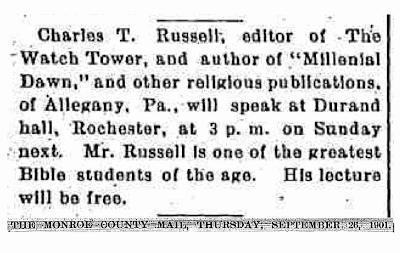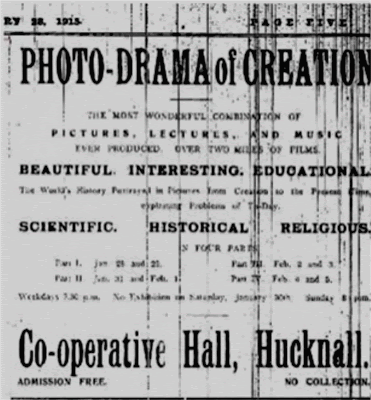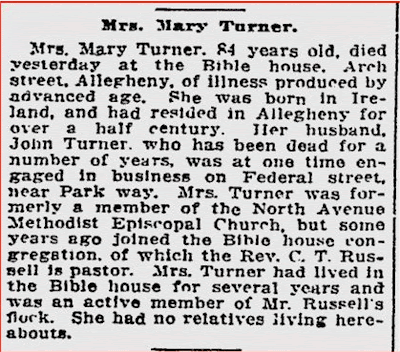My
Turn: Rachael’s Comments
Bringing this volume to print isn’t exactly like giving birth,
but there are similarities. Original research has its own set of pains,
agonies, and irritations. And it has its joys.
****
We knew error and fabrication
colored how this story has most often been told. We did not appreciate the
extent to which this is true. We expected a reasonable amount of competence
among those who have tackled Watch Tower
Many of those who preceded us were polemicists.
This is true of some who presented themselves as credentialed historians or
sociologists, and it is especially true of most clergy who’ve written on the
subject. It amazes me that these writers are taken seriously merely because
they were published.
We do not fault anyone for having a
point of view. We have our own, and privately we debate issues ranging from our
personal theologies to interpretation of historical evidence. However, a point
of view should not lead one to turn presumption into ‘fact.” It should not lead
one to fabricate.
The works of some are characterized
by logic flaws. An anonymous writer substitutes capital
letters for reason, presuming that capitalizing random words proves a
point. This reflects a seriously defective education on his part and on the
part of those gullible enough to find this convincing. He also withholds from
his readers documentation. If the antiquated psychological descriptor “anal
retentive” has any validity, it applies here.
We reject this approach. We tell you what our sources are,
and though that results in copious footnotes, it leaves no doubt about the
trail we followed. Occasionally we tell you where to find rare or otherwise
hard to find sources. Don’t ignore the footnotes. We adopted the dictum “the
story is in the details,” probing and poking at original sources, following hunches
and hints where ever they led.
After reading rough drafts of some of our chapters, another
writer suggested that this book is destined to be the classic presentation of Watch
Tower
A major flaw in previous research is willingness to parrot
unfounded assertions of others. If you take up the themes we’ve opened in this
volume, ask this critical question of each writer you consult: “How do you know
that?” Check their sources; probe for detail.
The story we tell here is, as Mr. Schulz observed in his
introductory essay, different from what we presumed it would be. We presumed a “unity
of belief” among Russell and his associates that did not exist. In volume two
we will detail the divisions and separations and early controversies that
resulted in ecclesiastical unity, a separate religion. Our premise as it
finally developed is that a group exploration of Bible teaching resulted in a
settled doctrine developed out of debate, difference and controversy. The
doctrinal set finally settled on created a new religious unity. It peeled off dissenters
who went their own ways.
In this volume we examine the historical and theological
roots of Zion Watch
Tower
Theologically I’m a skeptical believer. I approach historical
research in the same way, which means I question everything including commonly
believed “facts.” Many of those proved absolutely true. Some proved false. As
you explore this first volume, you will encounter the familiar and the new.
The men and women in this story, long dead though they are,
produced an emotional response. I came to like some of them. Some of them are
remarkably distasteful, mean spirited and delusional. No historian writes an
impartial history. But we have written to the full measure of our ability an accurate
one. Despite our best efforts, we have probably made some errors of fact. We hope
not, but given the depth and complexity of this research – and the newness of
some of it – it seems inevitable that we got something wrong. It won’t hurt my
feelings if someone points out the flaw, but I expect proof, not mere opinion.
I expect critics to be as competent as we are, and I hold them to the same
standards of historical research we manifest here.
A number of people have taken an interest in our research,
assisting in various ways. We cannot name them all, and some wish to remain
anonymous.
Institutions that were especially
helpful included the Methodist archive at Wofford
College
Some institutions were distinctly
un-helpful, even hostile. We’re still waiting on replies to emails and letters
sent to some several years ago. The Library of Congress was hostile and
unhelpful. The National Archives of the United
States of America Boston
University
Though the Watch Tower Society
declined access to a key document, they forwarded nine pages of photocopy, four
of which we did not have. They are, of course, not responsible for our research
or our conclusions. Given the opportunity to review volume one, they made no
comment. They did not sponsor this work.
Some individuals were exceptionally
helpful. This would be a significantly diminished work without their help. Some
names that should appear in this list do not because of privacy concerns.
** and his wife took time from a business
trip to photocopy archival material at an archive that was reluctant to help.
This provided key documentation.
** provided photocopies of rare
material.
An individual we’ll leave unnamed
visited the New York Public Library to view and copy documents we would
otherwise not have seen.
** of the Netherlands
** of the United
Kingdom
Dr. ** sent copies of key early
booklets. This book would not be as accurate without access to them.
William Buvinger allowed access to
the Buvinger family archives and provided the relevant photos used in this
book. Members of the Barbour, von Zech, Wendell, and J. A. Brown families
forwarded important material, including wills, family papers and photos.
Jan Stilson, editor and author of Biographical
Encyclopedia, Chronicling the History of the Church
of God Abrahamic Faith Atlanta
Bible College
** of Italy
** and ** helped us overcome copyright
issues connected with two photographs. Additionally, we found ** research very
helpful.
** of Austria
I’m certain we’ve left off many who
helped in various ways. To those not found in this list, I apologize. To those
who wish to be anonymous but who helped in various ways, my thanks.
Rachael
de Vienne














